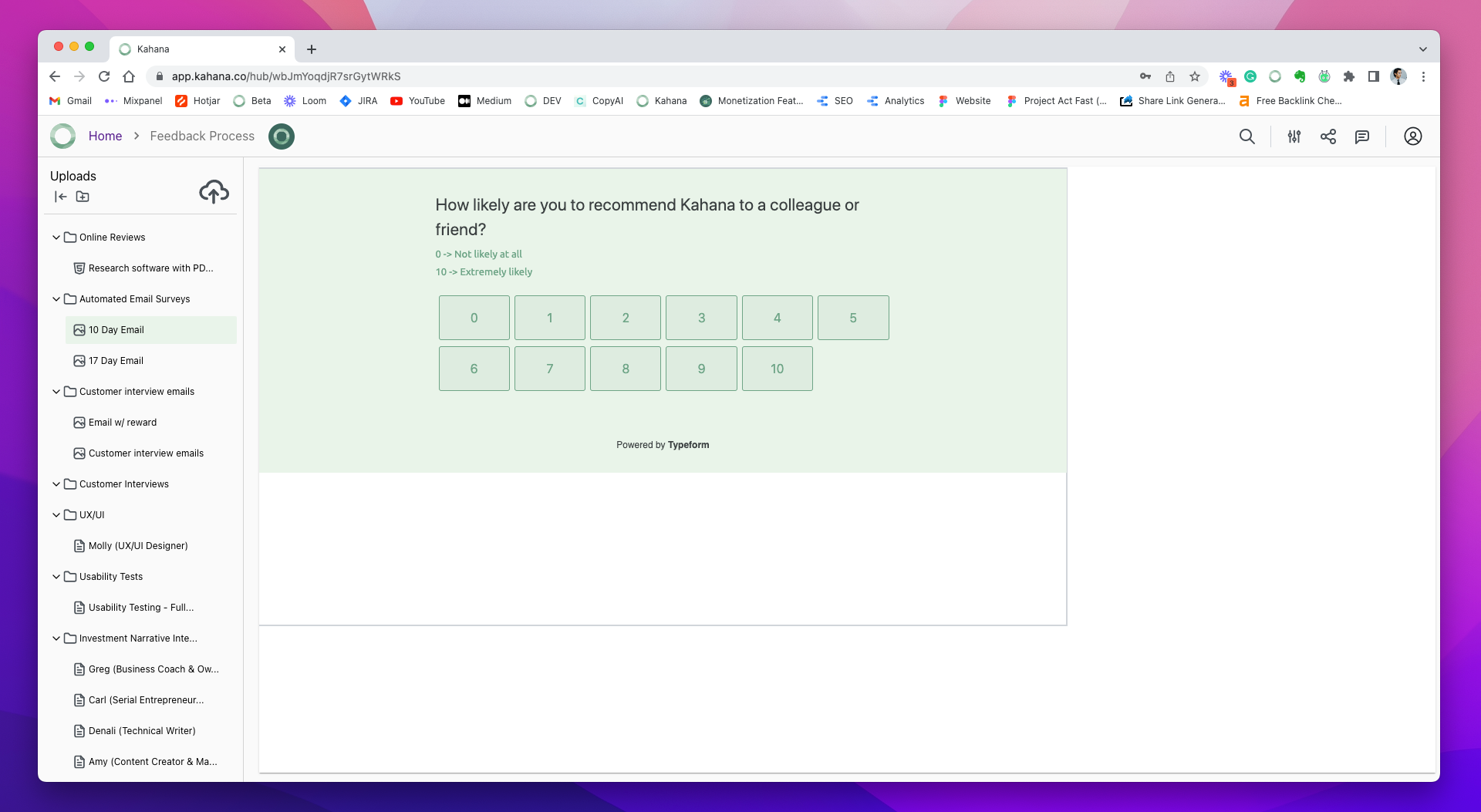Customer Loyalty Research: Definitive Guide [2025]

Topics covered ✅
- Customer loyalty research topics
- Customer loyalty marketing
- What is customer loyalty in business?
- Customer loyalty theory
- Customer loyalty definition
Today, it has become increasingly important for you not only to create the best product but also to provide the best experience. By developing a wonderful experience, companies satisfy their customers.
By satisfying their customers, they create a strong relationship. With a strong relationship, they inspire loyalty in those same customers.
In this article, we’ll walk through what customer loyalty is and is not, why it is so important, how we measure it, and the way your company can achieve it.

Claim Your Free Customer Loyalty Template
This hub is ready-made and pre-populated with survey, lists, and PDFs to help you improve your customer loyalty research.
Customers
Who are customers?
Customers are parties that buy a company’s products and services. These parties can include ordinary people who shop at a store and businesses that buy from suppliers.
While a person is quite different from a business in the scale of their purchases, their goal is fundamentally the same: to find goods, easy to acquire, and products. Because of these similarities, the principles behind achieving both a customer's and a business's loyalty are also similar.
Customer Loyalty
What is customer loyalty?
Customer loyalty is the continued desire of a customer to stay with a current company.
Why is customer loyalty important?
Companies rely on customer loyalty to keep people coming back.
This retention is key for stability and growth.
A returning customer base allows businesses to maintain steady profits while giving them the foundation to expand their product lines. However, a consistent pool of buyers should not be confused with a loyal group.
Just like a square is always a rectangle, but a rectangle is not always a square, a loyal customer is usually a consistent one, but a consistent customer is not always a loyal one.
Across Companies, Businesses, and Industries
Having only consistent customers leads to a phenomenon we call inertia, where people stay with a company purely because they find it easier than leaving. This mentality is based on issue avoidance.
As long as the customer experiences no issues from the company then they will not leave. The problem with inertia is that it can quickly change if something goes dramatically wrong, there are a series of small inconveniences, or a significantly better option presents itself.
This is different from customer loyalty because loyal customers might stay even if they do experience the aforementioned issues and find better options. Loyal customers stay because their previous and overall satisfaction is high due to factors outside just the product; we’ll explore those later.
Customer Satisfaction
Customer satisfaction, while not a perfect metric for measuring customer loyalty, is a useful indicator. The term is relatively self-explanatory, being the amount of satisfaction i.e. happiness a customer gets from a company’s product.
Customer satisfaction can be measured on a 10-point scale. The higher the score the higher the customer loyalty.
Most companies receive an overall score of eight. This may sound good, yet if a company receives an eight it most likely means they are relying on inertia. Their customers are just happy enough to stay, but if a better alternative presented itself the customers would most likely leave.
That being said the ideal score to ensure high customer loyalty is nine and 10. On top of customer satisfaction, there are three other notable ways to measure customer loyalty.
Frequency
The first is the frequency at which customers try other suppliers (this does not constitute a full switch, they can still be using your company’s products while introducing others).
Share & Recommendation
The second is the likelihood of the customer recommending your company. This method is the most accurate metric of customer loyalty.
After all, the greatest compliment one can give a company is to try to get others to buy from it as well.
“Likability”
Essentially, making your product good is not enough, you need to make your company likable.
For example, if your company is hired to supply another corporation and on the first delivery you, the company owner, make the delivery yourself, it will create the feeling that you care.
While you can not do this for every delivery, you can tell the company you are supplying that you will be their correspondent and do hands-on work with the products they are receiving.
Little acts like this paint a more personable and competent picture of your company, causing customers to feel more satisfied. In other words, loyal.
As such, likeability is critical because it’s hard to leave someone, or in this case a company, that you enjoy being with even if you encounter the occasional difficulty.
That leaves the question: what can you do to achieve high customer satisfaction and loyalty?
Product
The most important part of achieving customer loyalty is ensuring your company has a good product at a good price.
Simply put, something that a customer would want to purchase. Nothing else matters if the product does not work. This is especially important because competitors usually have satisfactory products.
To improve your product quality, consider conducting product testing market research.
Purchase
Moreover, even if your company can not beat those products in terms of quality or price, it can match them.
This is because for the majority of established markets the means of production and the cost of production are relatively constant. Thus, matching products on the market is like the buy-in at a poker table that makes you a valid competitor.
Once your product is good enough to be considered by customers (doesn’t have to be the best in price or quality, because the differences are marginal), you can focus on the minutiae that make your company more attractive than others.
Marketing
Marketing is all about the type of image you want your company to have.
One image is the personable one we mentioned at the end of the customer satisfaction section. Another is a strait-laced image, which constitutes a respectful and efficient demeanor in all types of business dealings.
And yet another possible image is an earnest one, where you make an extra effort to portray your company as a collection of hardworking people.
Whatever image you want your company to have, it needs to fulfill two criteria: seeming competent and pleasant.
- Appearing competent is avoiding issues and solving them fast when they do arise.
- Appearing pleasant is accommodating customer needs, solving issues without panic or pressure on the customer, and being polite in business dealings.
By achieving competency and pleasantness, you can truthfully advertise your image online, on TV, and in other spaces.
More importantly, your very satisfied and in turn loyal customers will do the work for you by simply recommending your company to others.

Talk with a Kahana representative
Fill out your information and a Kahana team representative will reach out to you. Have a simple question? Search our library of articles
